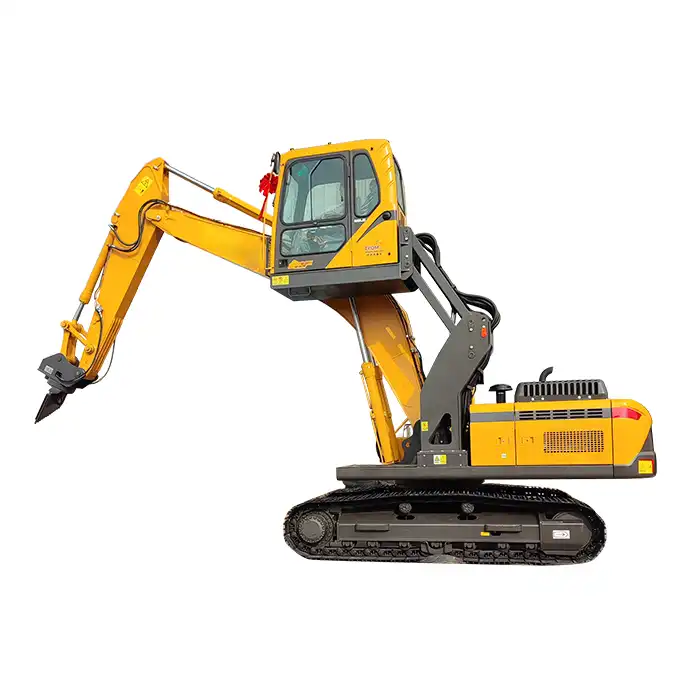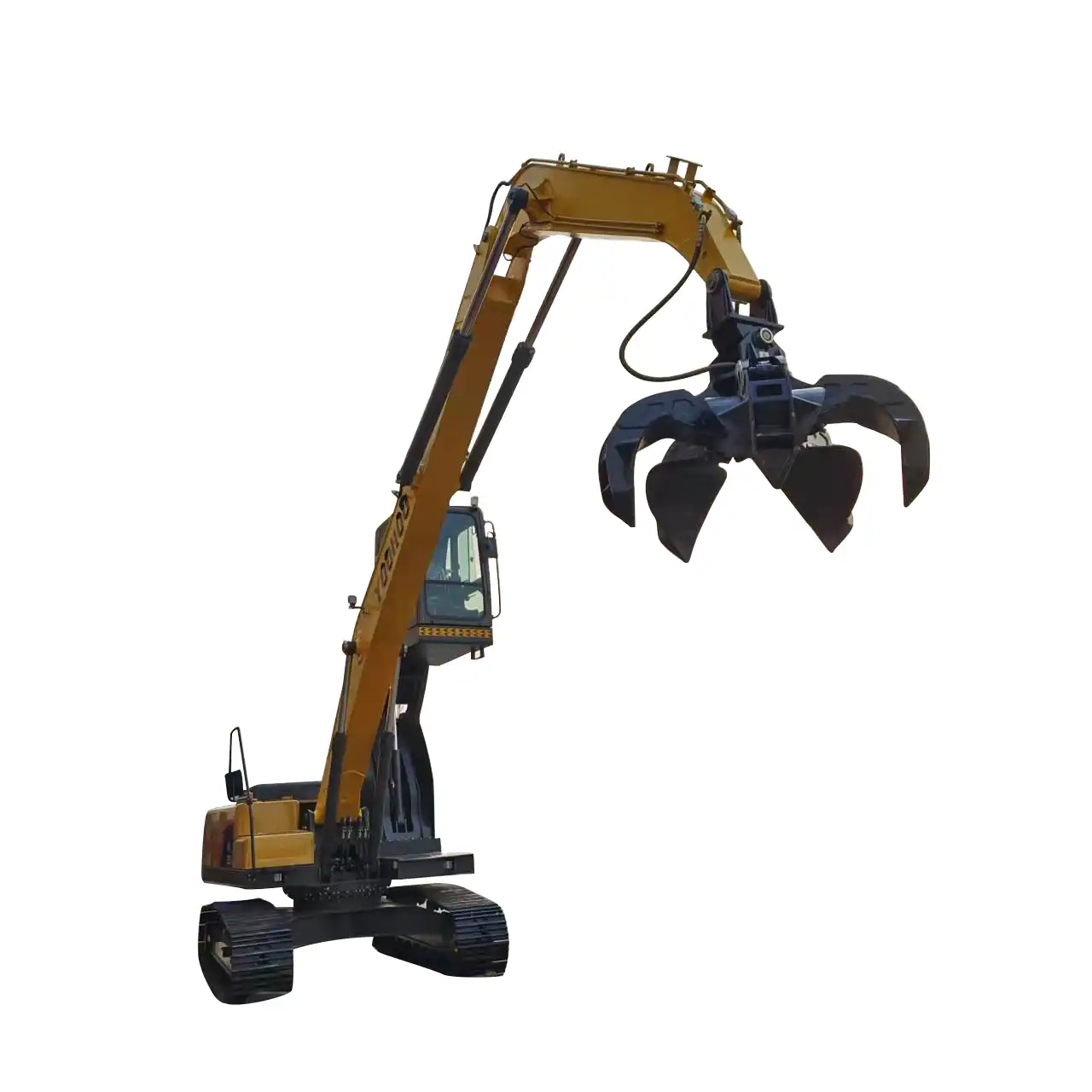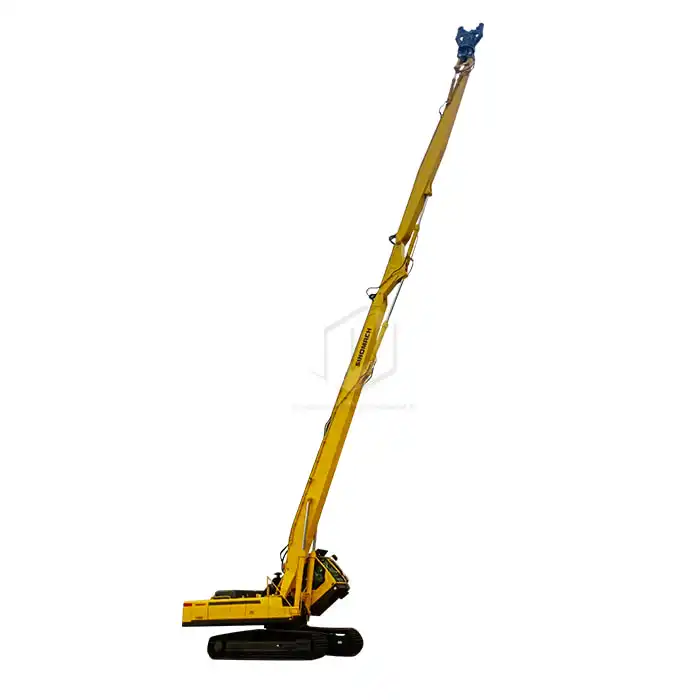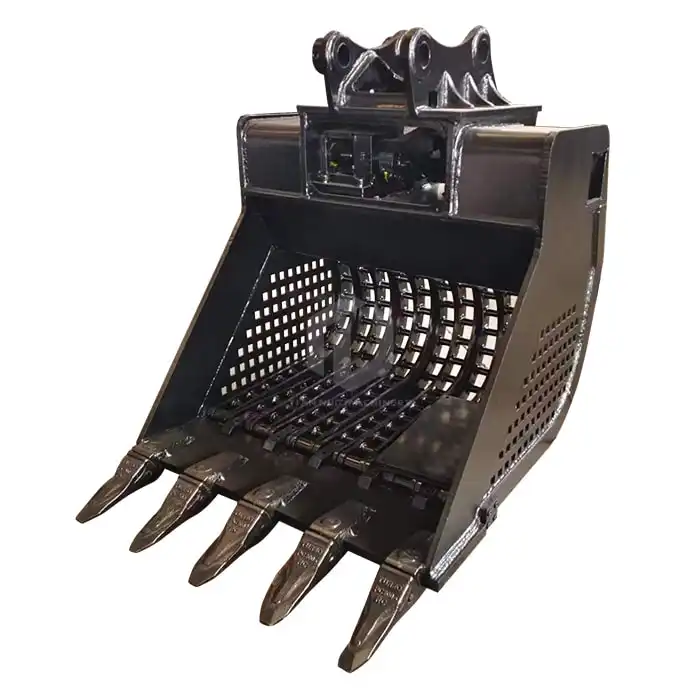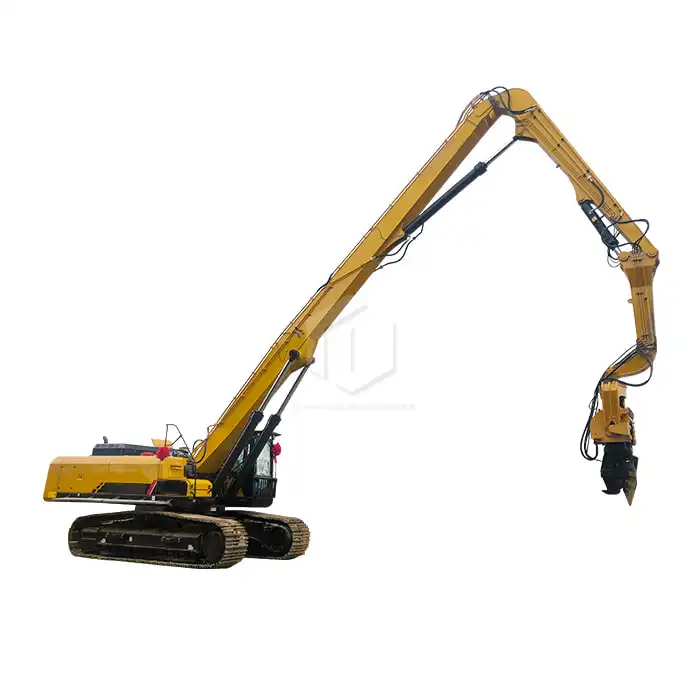How to Choose the Right Size of Railroad Excavator for Your Project?
The selection of a suitable size railway excavator is a critical step in railway construction and maintenance. The size of the excavator not only affects the construction efficiency and fuel consumption, but also directly relates to the construction safety. If the selected model is too large, stability and cost may be reduced; Too small excavators reduce work efficiency and accelerate wear.
This article will explain how to select the most appropriate railway excavator size according to the project needs, operating environment and accessory tools to help you find the best balance between efficiency and safety.
Define the scope of work for the project
Before type selection, first of all, clearly understand your construction tasks and working environment.
Maintenance or construction?
If it is mainly used for ballast cleaning, sleeper replacement or drainage ditch cleaning and other maintenance tasks, the medium railway excavator of 10-18t is generally selected.
In case of large-scale track laying or railway reconstruction works, it is recommended to use 20 – 30 tonne heavy excavators in order to cope with greater work intensity and tooling requirements.
Working space restrictions:
In urban, tunnel or platform areas, small railway excavators below 10 tons have advantages, small turning radius and flexible movement, suitable for narrow space operation.
The first step in determining the excavator tonnage is to evaluate the construction site, traffic conditions and working radius.

Match excavator type according to track conditions
The track structure varies from railway system to railway system (freight, passenger, light rail, etc.) and the bearing capacity and stability of the track determine the type and size of excavator to be used.
Track bearing capacity:
Heavy excavators require a stronger track foundation. Before use, confirm that the track can bear the total weight of equipment to avoid overloading.
Ground stability:
If the sleepers are loose or the ballast bed is loose, it is recommended to use a lighter railway excavator to reduce the damage to the track structure.
Compatibility of highway and railway:
If the equipment is equipped with High-Rail System, it shall be ensured that it matches the rail type and can be switched smoothly and safely on the rail.
Select the appropriate tonnage according to the operation demand
Different construction tasks have different requirements on lifting capacity and operation radius, so the correct tonnage can be safe and efficient.
Hoisting of heavy objects:
If lifting of rails, turnouts or steel beams is involved, it is recommended to use heavy railway excavators above 20 tons, equipped with reinforced boom and stable chassis.
Fine construction:
If the task includes drainage ditch cleaning, cable trench excavation or light handling, medium excavators of 10 – 15 tons can be selected to provide flexibility and lower energy consumption.
Remote operation:
Where slope clearing, channel dredging or long haul hauling is required, rail excavators with extended arms may be considered to extend the scope of work.
Proper matching of tonnage and work type can significantly improve construction efficiency and equipment life.
Match the hydraulic system according to the requirements of accessories
The performance of railway excavators depends not only on the structure of the body, but also on the need for accessories. Different accessories have different requirements on the flow and pressure of the hydraulic system.
Ballast Shaping and Tampers (Tampers, Ballast Regulators):
It belongs to high load accessories, so it shall be matched with large excavator with high hydraulic flow and good system pressure stabilization performance.
Sleeper Clamp, Swivel Grab, Tiltrotor:
Suitable for medium excavators with both grip and mobility, suitable for track maintenance operations.
Screens, Weeders, Cutting Machines:
It is recommended to use equipment equipped with high flow hydraulic circuit to ensure continuous and stable power output.
Be sure to confirm the hydraulic requirements of accessories during type selection to avoid system overload or excessive oil temperature.

Match the hydraulic system according to the requirements of accessories
The performance of railway excavators depends not only on the structure of the body, but also on the need for accessories. Different accessories have different requirements on the flow and pressure of the hydraulic system.
Ballast Shaping and Tampers (Tampers, Ballast Regulators):
It belongs to high load accessories, so it shall be matched with large excavator with high hydraulic flow and good system pressure stabilization performance.
Sleeper Clamp, Swivel Grab, Tiltrotor:
Suitable for medium excavators with both grip and mobility, suitable for track maintenance operations.
Screens, Weeders, Cutting Machines:
It is recommended to use equipment equipped with high flow hydraulic circuit to ensure continuous and stable power output.
Be sure to confirm the hydraulic requirements of accessories during type selection to avoid system overload or excessive oil temperature.
Balancing Efficiency and Transport Cost
When selecting the excavator size, not only the operation capacity but also the transportation and use cost shall be considered comprehensively.
Transportation convenience:
Railway excavators above 20 tonnes typically require special trailers or permits to transfer, while small and medium-sized equipment is easier to move.
Fuel efficiency:
Small equipment with low fuel consumption is suitable for light load and high frequency operation.
Multi-functionality:
Medium excavators (approximately 15 tonnes) are typically the best balance point, being able to handle heavy tasks while being flexible to cope with multiple scenarios.
Reasonable selection can reduce overall construction cost and improve equipment utilization rate.

Personnel experience and safety factors
Even powerful railway excavators can pose safety hazards if improperly operated.
Operating difficulty:
Middle-size equipment typically has smoother controls and more responsive, suitable for operators at different levels of experience.
Security Configuration:
Stability monitoring system, overload alarm and panoramic visual cab are recommended to improve operation safety.
Training and collaboration:
The operation of large-tonnage excavators requires professional training, especially when working on slopes, curves or narrow rail sections.
Selecting the right railway excavator for your project is the key to balancing efficiency, safety and cost. By analyzing the project scale, track conditions, accessory types and operation requirements, you can find the most suitable model.
Proper selection not only improves work efficiency, but also prolongs equipment life, reduces maintenance costs, and ensures construction safety.
Whether you are doing routine maintenance or railway construction, a suitable railway excavator is the basis for the success of your project

